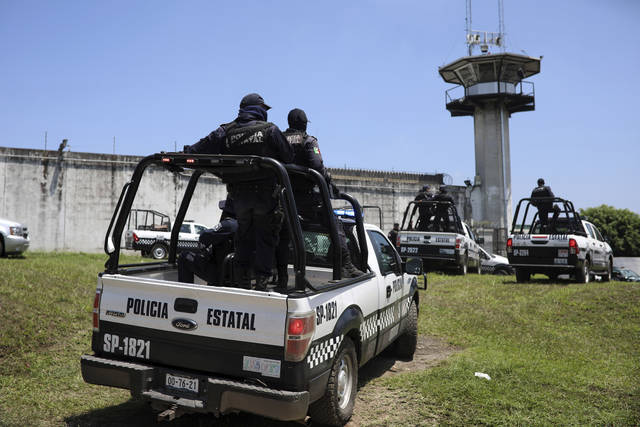MEXICO CITY — Mexico’s state and federal prison systems are understaffed and dirty, but are no longer so dangerous and overcrowded, according to a report released Thursday.
The governmental National Human Rights Commission says that 84 percent of the 165 state prisons inspected have insufficient staff, 76 percent don’t adequately separate convicted inmates from people awaiting trial, and 72 percent had problems with hygiene.
But prison riots and fights fell to 892 in 2018, down from 1,043 in 2017. And killings inside prisons fell from 104 in 2017 to 31 in 2018.
Overcrowding was reported at 34 percent of state prisons and none of the 21 federal prisons. That marked progress for prisons that had once often been seriously overcrowded.
However, Mexico’s Congress recently approved reforms that would require more people to spend time in prison on pre-trial detention, a practice that had been reserved only for the most serious crimes.
The head of the rights commission, Luis Gonzalez Perez, predicted that would swell the prison population, and that the construction of new prisons hadn’t kept up with the predicted increase.
“The risk is that the prison population is going to grow strongly, that’s the risk and we haven’t solved it,” said Gonzalez Perez. “That is why, when measures are taken, they have to be integrally planned.”
Inmates control at least some activities at 45 percent of state prisons and extort other inmates at 40 percent.
The commission criticized this year’s decision to close the Islas Marias penal colony, noting the island facility was the highest-rated among all federal prisons. The last 652 inmates were transferred off the island, located 70 miles (110 kilometers) off the Pacific coast of Nayarit state, in February.
The penal colony, the last of its type in the hemisphere, will be turned into an environmental education center.
The island’s low-risk population, lack of walls in most places and greater liberty for inmates made it a good place for inmates to get ready for release. But the costs associated with maintaining the remote island prison were much higher than other mainland prisons.
Gonzalez Perez suggested it should have been kept open.
“I think the best alternative should have been sought, balancing the environment and the principle of rehabilitation, and I don’t think that principle was served,” Gonzalez Perez said.





